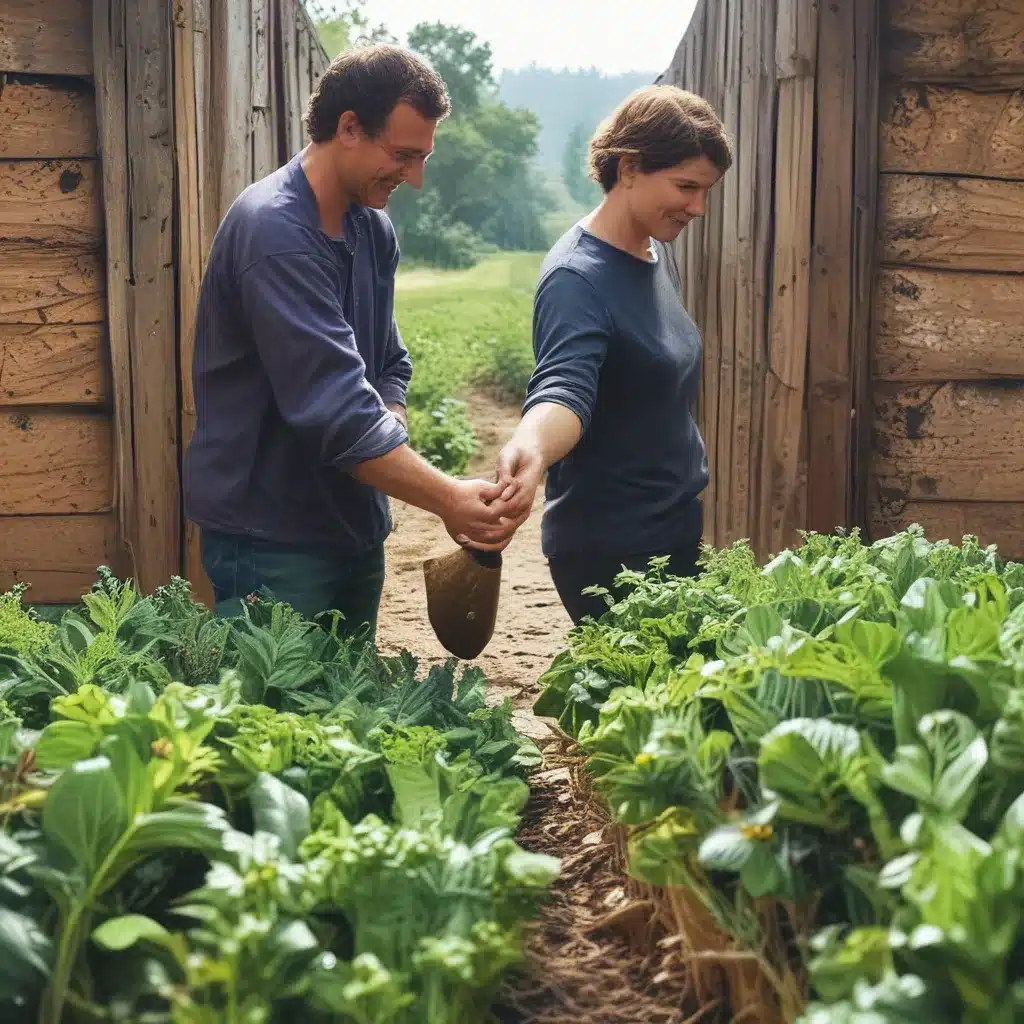
Breaking Down Silos: The Power of Tri-Sector Collaboration
As I sit here in my home office, gazing out at the vibrant green fields of the Thornapp le CSA farm, I can’t help but marvel at the intricate web of relationships that sustains this thriving community. It’s a far cry from the siloed, disconnected landscape I once knew – a testament to the transformative power of organic alliances forged between business, government, and philanthropy.
You see, not too long ago, this region was a veritable labyrinth of distinct towns, villages, and districts, each operating in its own self-contained bubble. Collaboration was a rare commodity, and leaders seldom had the opportunity to interact purposefully. It was as if the soil had become too depleted to nurture the growth of meaningful partnerships.
But then, something extraordinary happened. Inspired by the principles outlined in Seeding the Ground for Tri-Sector Alliances Before the Crisis Hits, a group of visionary individuals from the business, government, and philanthropic sectors set out to cultivate a new way of working together.
Tending the Soil: Fostering Relationships and Trust
The first step, they realized, was to tend to the soil – to build relationships and foster trust between leaders across these traditionally siloed sectors. As the BCG study on the power of alliances suggests, it’s all about finding those “sweet spots” where common interests can take root and flourish.
For the Thornapp le CSA team, this meant getting out from behind their desks and engaging in some good old-fashioned networking. They attended community events, hosted roundtable discussions, and even organized a few friendly softball games (who says team-building has to be all business?). The goal wasn’t to push any specific agenda, but rather to simply get to know one another, to find those shared passions and concerns that could serve as the foundation for future collaborations.
And it worked. Slowly but surely, those stiff, formal interactions gave way to genuine friendships and a sense of trust. As the National Defense Industrial Association report points out, these kinds of “organic tri-sector alliances” thrive when they’re built on a bedrock of personal relationships and a shared commitment to the greater good.
Pollinating Ideas: Transferring Knowledge Across Sectors
With the soil thus prepared, the next step was to start pollinating ideas – to transfer strategies and best practices across the business, government, and philanthropic sectors. And who better to take on this role than a regional foundation, serving as a neutral convener and trusted intermediary?
The Rauch Foundation, which had long been active in the Thornapp le CSA community, stepped up to the plate. They organized workshops, facilitated cross-sector dialogues, and even dispatched their own “idea ambassadors” to share innovative solutions from elsewhere in the region. It was like a master gardener, carefully tending to the needs of each plant and ensuring that the entire ecosystem flourished.
The results were nothing short of remarkable. Suddenly, those once-isolated leaders were collaborating on everything from emergency food distribution to sustainable transportation initiatives. And the impact was felt far beyond the boundaries of any single organization or sector.
Harvesting the Fruits of Collaboration
As I survey the lush, thriving fields of the Thornapp le CSA, I can’t help but draw parallels to the transformation that has taken place in our community. What was once a barren, disconnected landscape has blossomed into a vibrant, interconnected ecosystem – all thanks to the power of organic alliances.
Take, for instance, the partnership that emerged between the local government, the Thornapp le CSA, and a nearby food bank. When the COVID-19 pandemic hit, these three entities came together to establish a seamless distribution network, ensuring that fresh, nutritious produce reached the most vulnerable members of our community. It was a win-win-win scenario, with the government providing logistical support, the food bank leveraging its existing infrastructure, and the Thornapp le CSA contributing its high-quality, sustainably grown crops.
But the benefits of these organic alliances go far beyond crisis response. They’ve also paved the way for long-term, systemic changes that are transforming the way we approach community development, sustainability, and social welfare. From innovative transportation solutions to collaborative workforce training programs, these cross-sector partnerships are rewriting the playbook on how we can tackle our most pressing challenges.
Cultivating a Culture of Collaboration
Of course, nurturing these organic alliances is no easy feat. It requires a delicate balance of patience, flexibility, and a willingness to step outside of our comfort zones. As the NDIA report suggests, it’s all about keeping the system “open” and letting new ideas and strategies emerge through the dynamic interplay of diverse stakeholders.
But the rewards, as we’ve seen, are well worth the effort. By breaking down those age-old silos and forging genuine, purpose-driven partnerships, we’ve tapped into a wellspring of creativity, resilience, and community-driven problem-solving. And the Thornapp le CSA is just one shining example of what’s possible when we cultivate a culture of collaboration.
So, as I sit here, watching the sun dip below the horizon and the first fireflies begin to emerge, I can’t help but feel a sense of optimism and pride. This is what the future of community-supported agriculture – and indeed, the future of our communities as a whole – can look like. All it takes is the courage to dig deep, tend the soil, and let those organic alliances take root and flourish.



